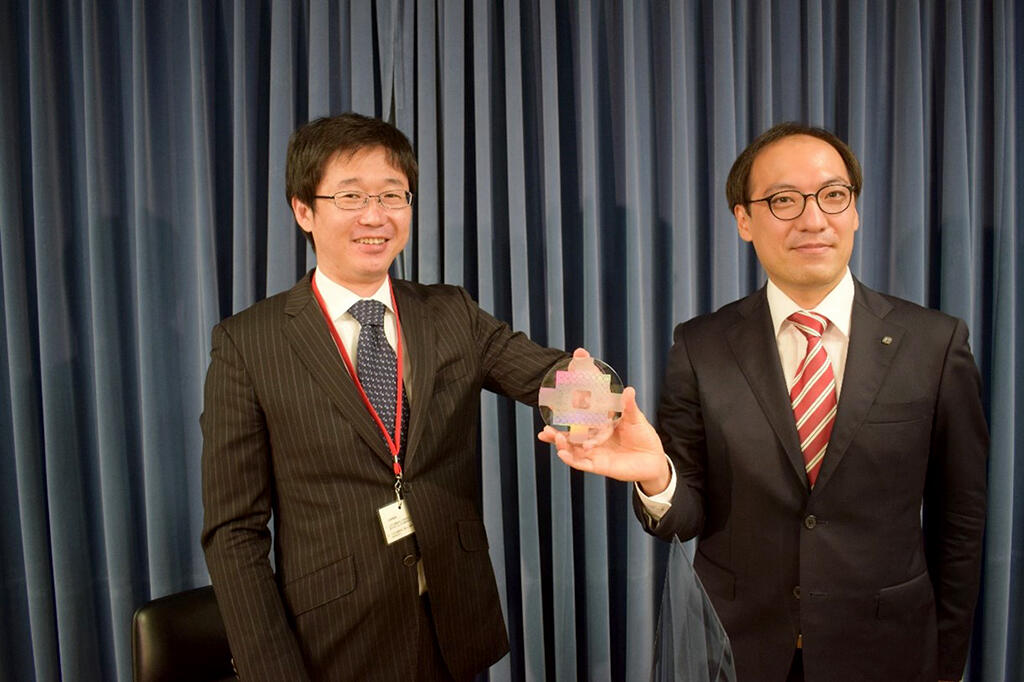A joint research group consisting of Chief Scientist Rikiya Watanabe and Research Scientist Hajime Shinoda of the RIKEN Cluster for Pioneering Research (CPR), Professor Hiroshi Nishimasu of the Research Center for Advanced Science and Technology, The University of Tokyo (RCAST), Professor Osamu Nureki of the Graduate School of Science, The University of Tokyo, Professor Takeshi Noda of the Institute for Life and Medical Sciences, Kyoto University, Associate Professor Hiroaki Takeuchi of the Graduate School of Medical and Dental Sciences, Tokyo Medical and Dental University, Professor Longzhu Cui of Jichi Medical University and their colleagues have developed a device that can automatically detect COVID-19 within nine minutes, with a comparable degree of sensitivity to a PCR test, at a low cost of no more than two dollars per use. They have also developed a technique that is capable of identifying variations in single nucleotide units, and reached an accuracy rate of at least 98% when it comes to determining positive results and variants in verification testing using clinical samples. Chief Scientist Watanabe commented, "We are engaged in joint development with Sysmex, and want to make this into a product as early as this fiscal year." Their research results were published in Communications Biology.

Diagnosing a COVID-19 infection mainly involves using an antigen test, which detects proteins, or a PCR test, which detects viral RNA. An antigen test can provide a diagnosis in the short time of around 30 minutes, but its detection sensitivity is not high. A PCR test has high detection sensitivity, but requires at least one hour for results to be known.
Last year, the joint research group developed SATORI, the world's fastest COVID-19 detection method, which combined single-molecule detection for enzymatic reactions using microchips and the nucleic acid cleavage enzyme CRISPR-Cas13a (Cas13a). However, there were issues with this - for example, it cannot discern variants, as it has a tenth of the sensitivity of PCR tests.
Now, the group has succeeded in developing a completely automatic detection device that greatly improves the sensitivity and accuracy of the SATORI method; this device is called opn-SATORI (automated platform on SATORI).
First, the group made the detection sensitivity around 30 times better by using a new type of CRISPR-Cas13a (derived from Leptotrichia trevisanii, an anaerobic Gram-negative bacillus). Professor Nishimasu noted, "Professor Cui of Jichi Medical University discovered this during a different AMED project, and when he explored its structure and other aspects, he realized that it has unexpectedly good detection sensitivity when utilized in the SATORI method."
The microchip used in the SATORI method contained 1 million 3-femtoliter holes, which allow detection on a single-molecule level by emitting fluorescence when viral RNA fragments and enzymes enter them. However, probability theory determines whether viral RNA will enter the holes on the microchip, and this lowered the detection sensitivity. Thus, the group used avidin to modify the surface of magnetic beads and ensured that Cas13 was concentrated on these magnetic beads through the biotinylation of Cas13. They then forced the magnetic beads to catch in the holes on the microchip using a magnet. Doing this improved the detection sensitivity by a factor of around 46. Through these two methods, detection sensitivity improved by a factor of around 1400.
The group created and evaluated over 500 types of guide RNA sequence, which affects the ability of Cas13a to discern viruses, to determine the most suitable guide RNA for identifying variants. In fact, they were able to identify the wild-type, α variant, β variant and omicron variant with 97.5% accuracy by detecting a single nucleotide mutation. "If we know the RNA sequence of the variant, we can establish the most suitable guide RNA in three weeks." (Watanabe)
The group has developed a new device with microchips integrally molded on a CD through joint research with FUJIFILM Media Crest Co., Ltd. 40 samples can now be measured on one CD. In addition, the group has been able to reduce the cost of a test to around two dollars or less per sample by reviewing materials, including reagents, and the manufacturing process. Furthermore, they have developed an automated platforming for sample testing. Once a sample is set then a result can be obtained in around nine minutes. This could also be applied to influenza and cancer.
Chief Scientist Watanabe commented, "If we can ensure that this device is small in size, people will be able to test for infections and identify variants in town clinics, airports and similar locations, so we want to make this into a product as quickly as we can. Plus, respiratory syncytial virus (RSV) and the influenza virus also have single-chain RNA, so we will be able to diagnose these in the same way. As this can be used to detect disease biomarkers, we also want to use it for early diagnosis and stratification of cancers and other illnesses."
This article has been translated by JST with permission from The Science News Ltd.(https://sci-news.co.jp/). Unauthorized reproduction of the article and photographs is prohibited.




